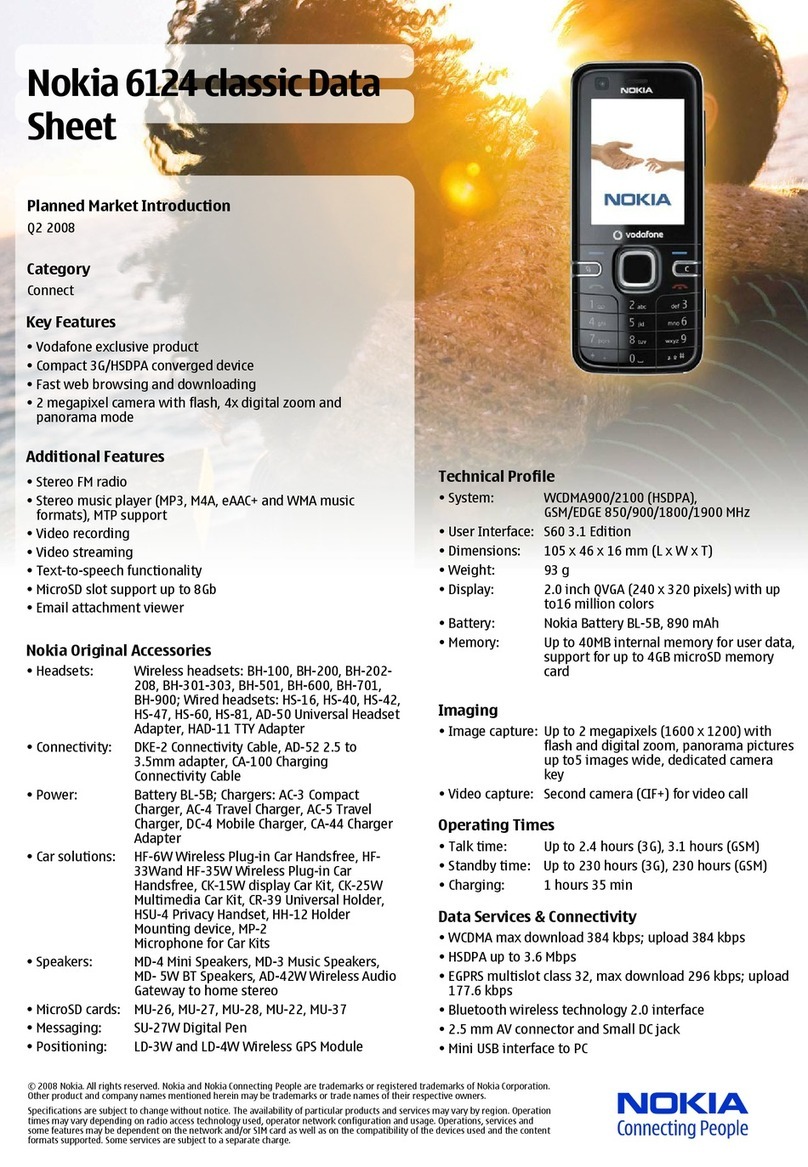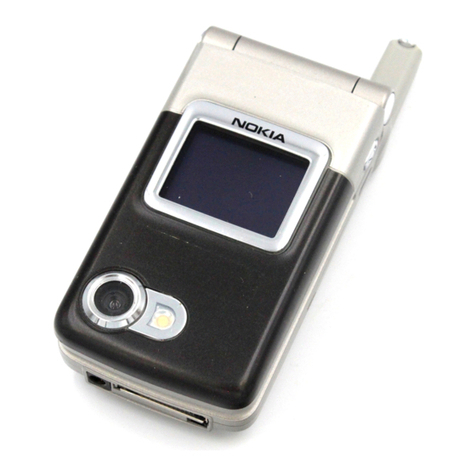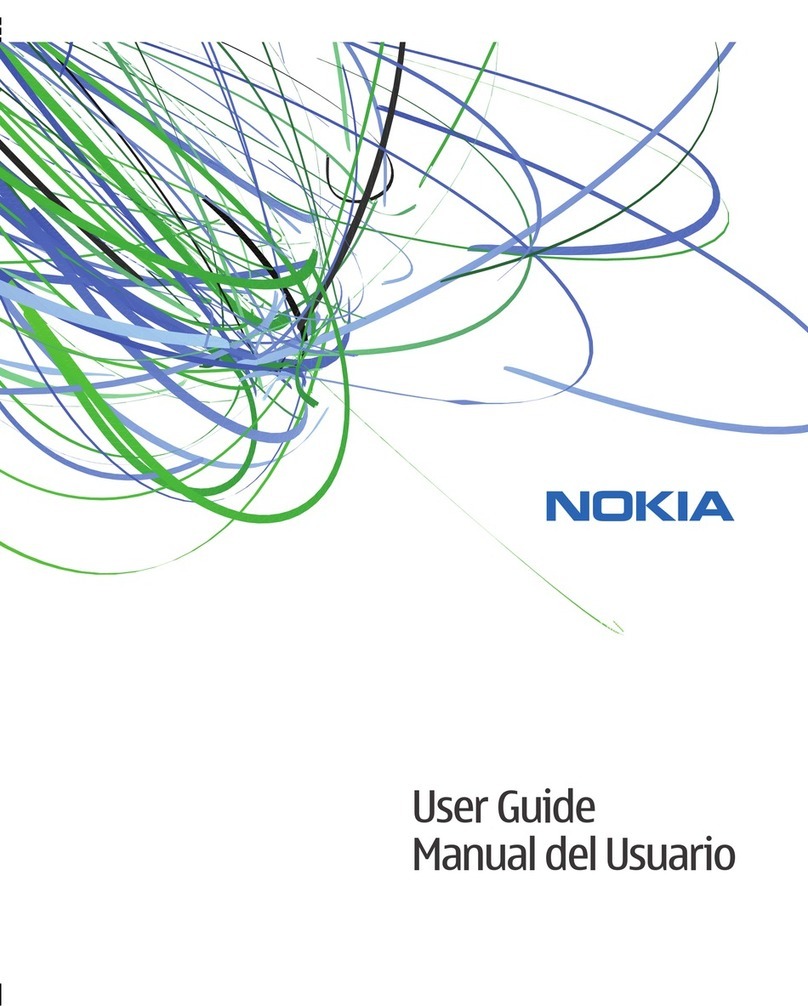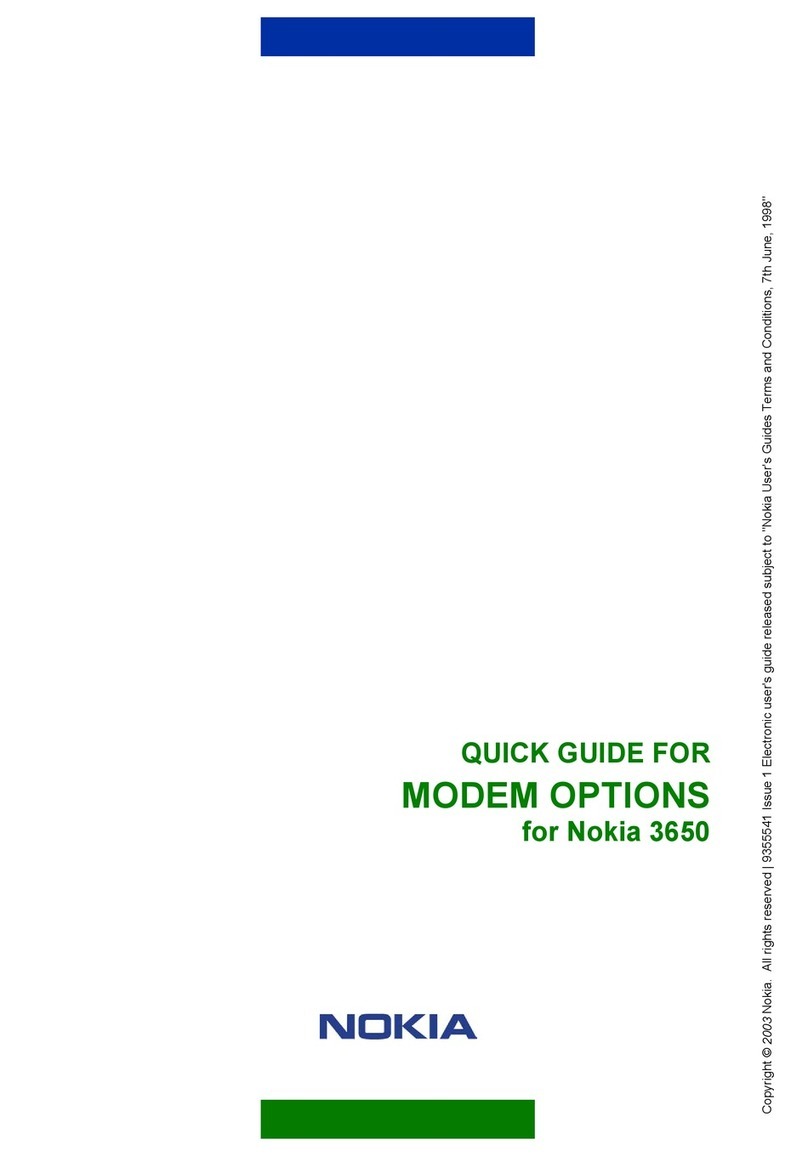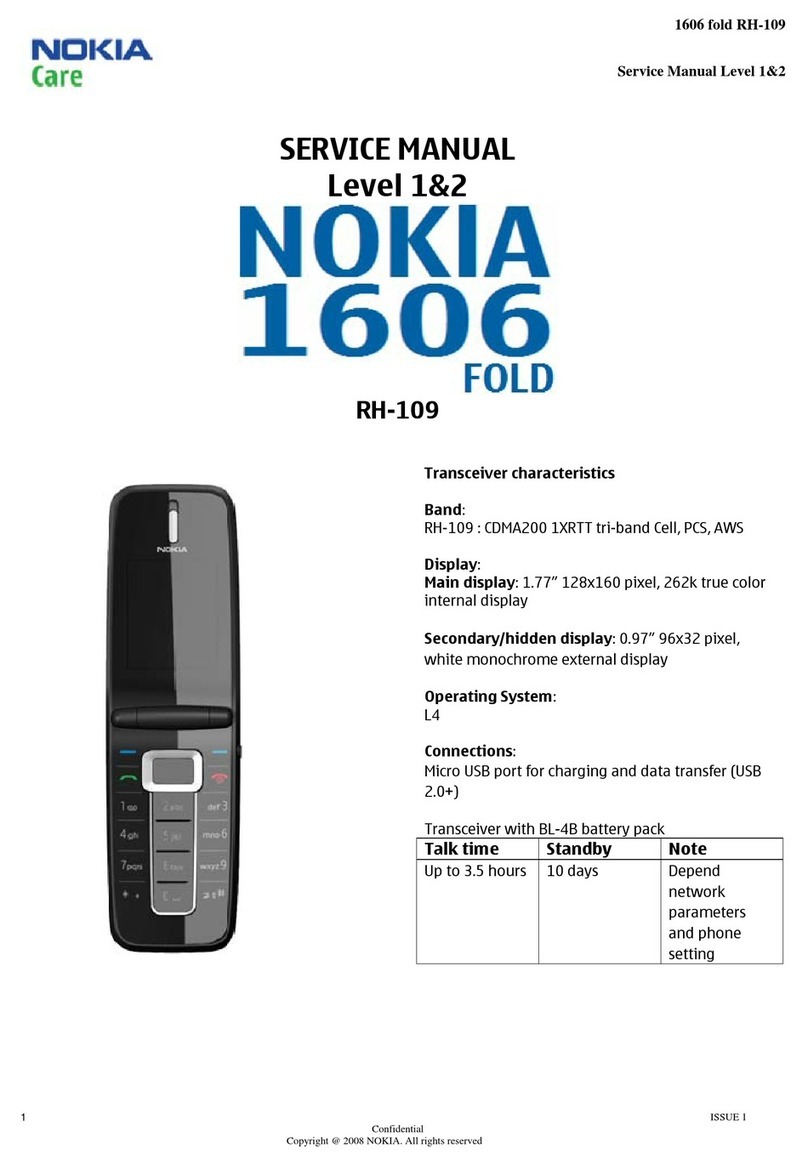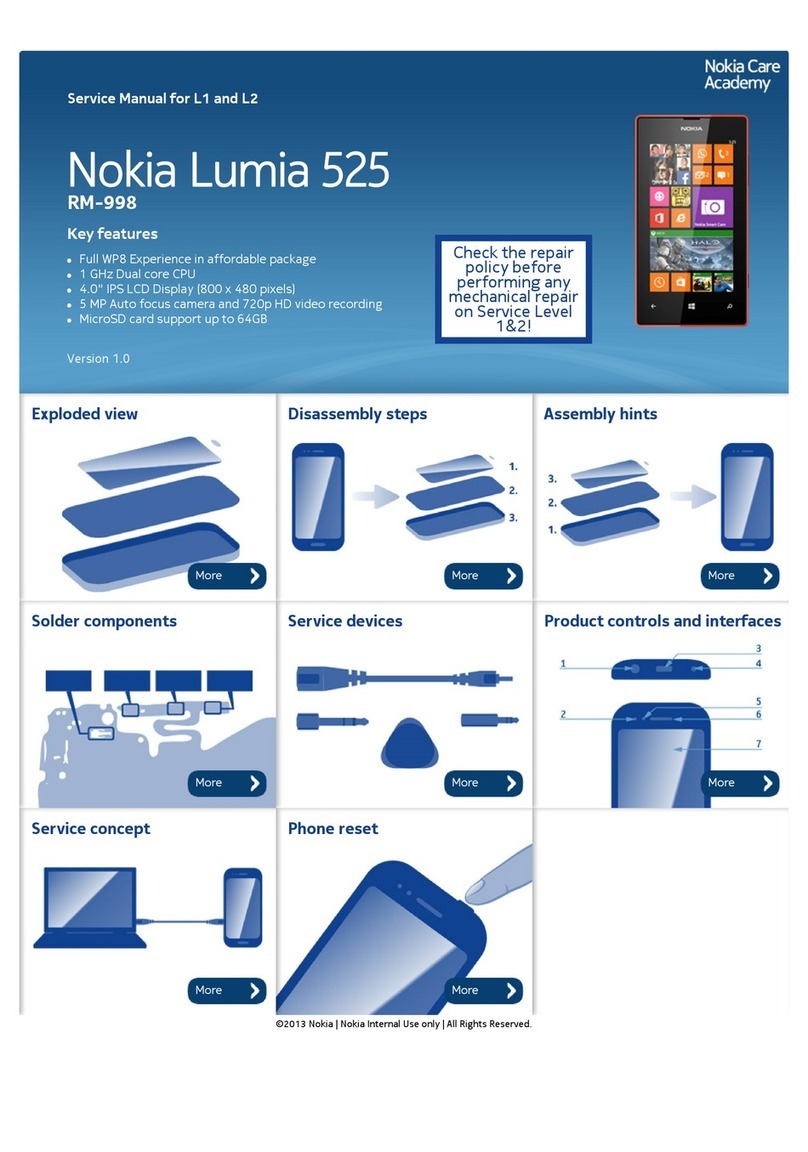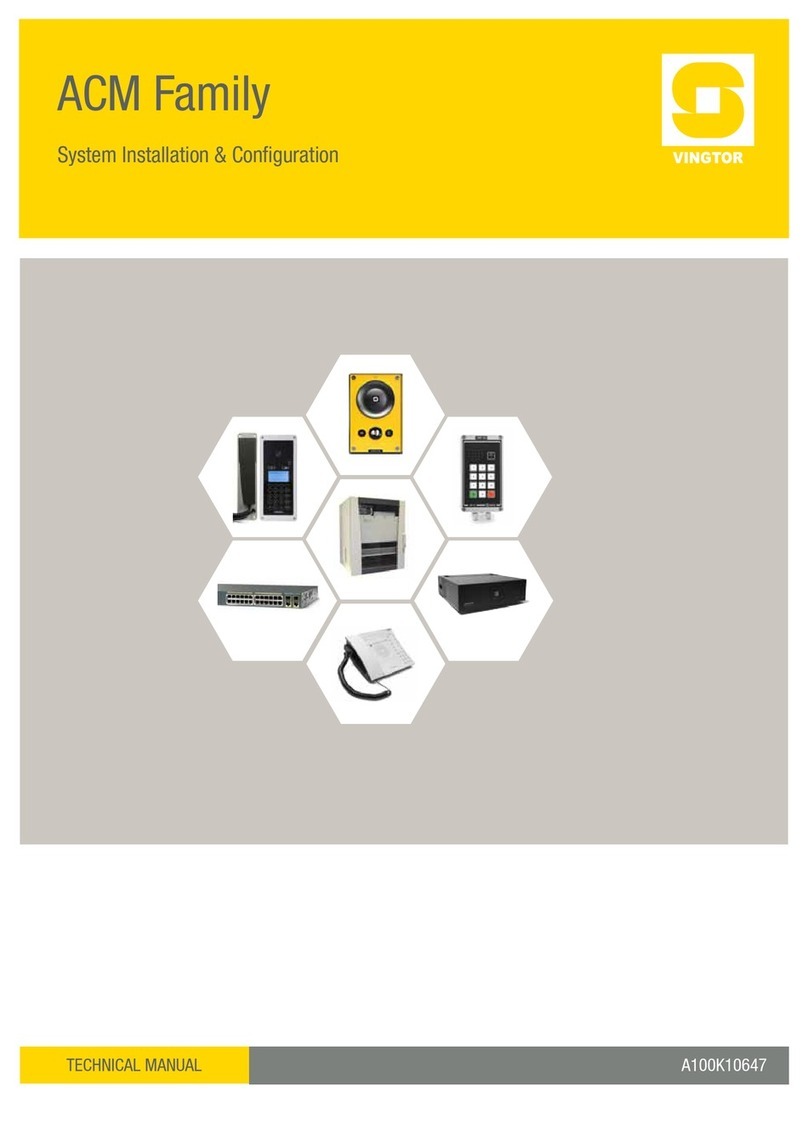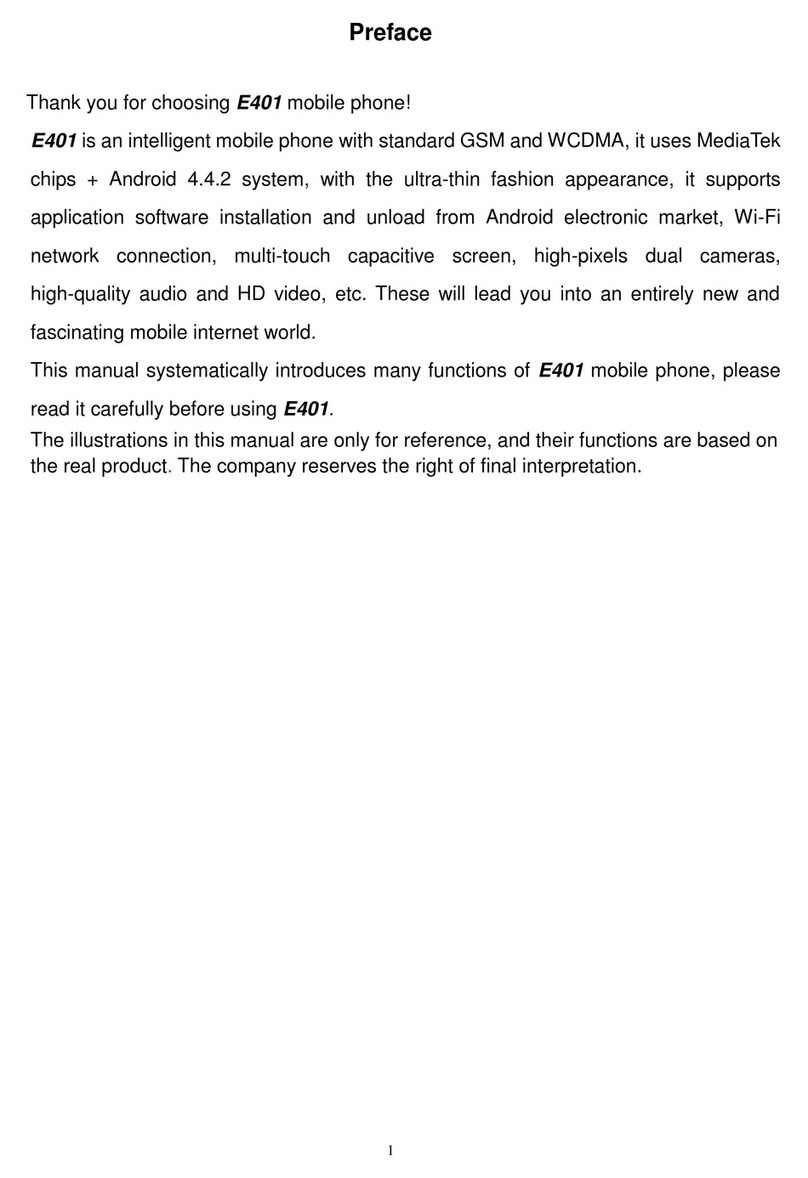
NSD–1
Disassembly / Troubleshooting Instructions
PAMS Technical Documentation
Page 9
Issue 2 09/00 Nokia Mobile Phones Ltd.
V201, R220 and C212 should be installed, and R202 should not be
installed. MICP should be about 1.7VDC, and MICN should be about
0.4VDC. Internal microphone bias should only be active during a call.
The XMIC is biased by the AUXOUT signal (pin 75) through R209 and
R208. The output voltage at pin 75 is about 1.5V.
Earpiece and XEAR
The internal earpiece is driven differentially from pins 77 and 80 (EARP
and EARN). The DC voltage on these two pins is 1.35V. The difference
in the DC voltage between these two pins should not be more than 50mV.
The XEAR signal drives audio to the external accessories. The CAFE
signal name is HF (pin 81). The DC level on this pin should be 1.35V.
HFCM (pin 82) should also be at 1.35V. The difference in DC voltage be-
tween these two pins should not be more than 50mV.
Note that SGND is the return path for XMIC and XEAR.
Clock circuit
A 19.2MHz sinusoid should appear on pin 25 (Also TP20). This is from
the VCTCXO in the RF. The CAFE will then produce a 19.2MHz clock at
pin 18 (TP22), and a 9.83MHz clock on pin 19 (TP21). See also Clocks
section.
AMPSMOD
AMPSMOD is the voice signal to modulate (FM) the RF carrier for trans-
mission. It is the voice signal that has been processed by the DSP
(MAD4) for transmission in AMPS mode. It represents a modified version
of the signal produced by the microphone (CAFÉ pin 58).
Transmit and Receive RF Signals
In CDMA mode, receive I and Q channel RF signals [RXIQ(3:0)] come
into CAFÉ at pins 44, 45, 47, and 48. C207, C208, C209, and C210 can
also be checked for these signals since they are in series with the CAFÉ
pins. Transmit I and Q RF signals [TXIQ(3:0)] can be seen at pins 55, 56,
59, and 60 and C201, C204, C222, and C224.
In AMPS mode, the modulated receive RF signals (LIM_P and LIM_N)
can be seen coming into pins 23 and 24 and C216 and C217. For the
AMPS Transmit signal, see AMPSMOD above.
MAD4
The MAD4 ASIC is the core of the baseband functionality and basically
contains the DSP, MCU, and CDMA logic. The DSP is used to perform
functions such as RF control, DTMF tone generation, and it implements
the vocoder. The MCU is used to perform functions that do not require as
much power. These are higher level functions such as UI software (key
presses, backlighting, LCD functions, etc.) and mode control.
DSP
The DSP sends control signals to the RF via PDMs. In order to control
RF parameters such as TX_VCO_CAL or TX_LIM_ADJUST, a continu-





